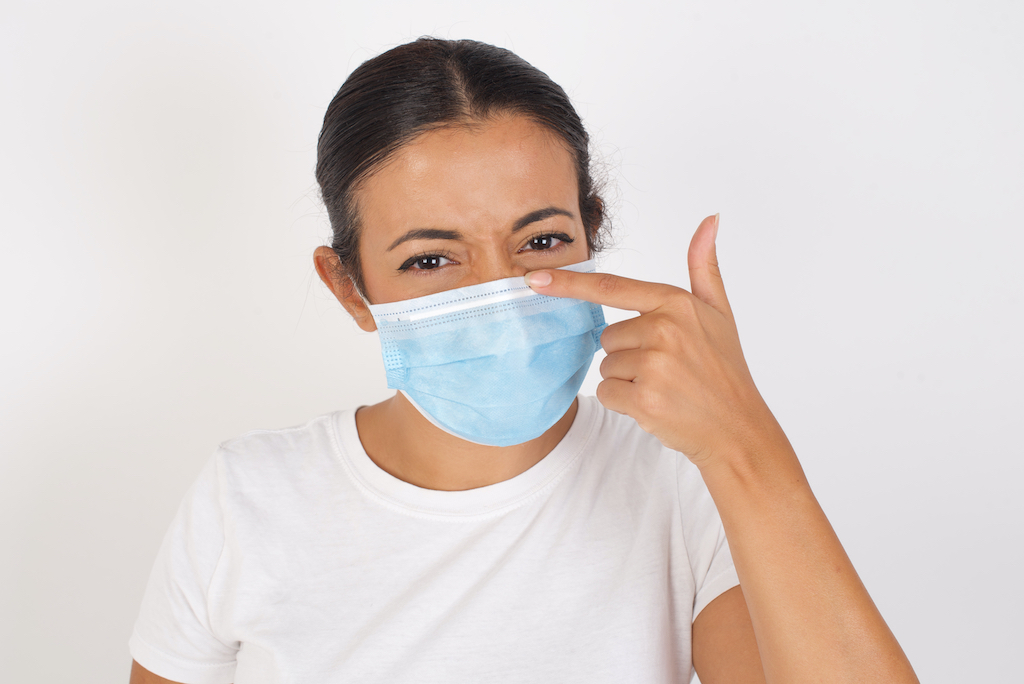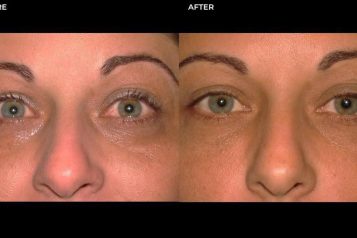Eric Shiah, BA contributed to this article.
 Photo Credit: ShutterstockDr. Samuel Lin is a double board-certified Plastic Surgeon and Associate Professor of Surgery at Harvard Medical School who practices in Boston, Massachusetts. Dr. Lin is an active Board Member of the Susan G. Komen for the Cure and Bright Pink Foundations. Dr. Lin is active in both basic science and clinical research with a focus on face/neck/nose surgery (rhinoplasty), breast surgery (reduction, lift, and reconstruction), and body contouring. He collaborates with engineers, scientists, and other plastic surgeons at other institutions within the New England area, nationally, and internationally. He is the editor of several medical textbooks including Aesthetic Atlas of the Head and Neck, Atlas of Body Contouring, and Plastic and Reconstructive Surgery Pearls of Wisdom and Pearls of Wisdom Second and Third Editions. Haute Beauty Expert Dr. Samuel Lin goes through multiple treatment options and tips to tackle facial acne caused by masks.
Photo Credit: ShutterstockDr. Samuel Lin is a double board-certified Plastic Surgeon and Associate Professor of Surgery at Harvard Medical School who practices in Boston, Massachusetts. Dr. Lin is an active Board Member of the Susan G. Komen for the Cure and Bright Pink Foundations. Dr. Lin is active in both basic science and clinical research with a focus on face/neck/nose surgery (rhinoplasty), breast surgery (reduction, lift, and reconstruction), and body contouring. He collaborates with engineers, scientists, and other plastic surgeons at other institutions within the New England area, nationally, and internationally. He is the editor of several medical textbooks including Aesthetic Atlas of the Head and Neck, Atlas of Body Contouring, and Plastic and Reconstructive Surgery Pearls of Wisdom and Pearls of Wisdom Second and Third Editions. Haute Beauty Expert Dr. Samuel Lin goes through multiple treatment options and tips to tackle facial acne caused by masks.
As an effective way to reduce the spread of COVID-19, masks have joined the group of essentials we grab whenever we leave our home. However, frequent and prolonged wearing of face masks can cause a variety of skin reactions ranging from itchiness to acne.
In fact, side effects from wearing masks have become so common globally that the term ‘maskne’ (mask + acne) was coined and popularized on social media. Formally and medically known as acne mechanica, maskne is the result of oil and sweat building up underneath the mask. While masks provide a barrier to prevent the spread of respiratory droplets, they also create a hot and humid environment for bacteria to grow. Skin also becomes more susceptible to rashes, inflammation, and irritation. The points of contact between the mask and face typically become the most irritated, which is why breakouts are frequently seen along the jawline, cheeks, and nose. Those with a history of acne or other skin conditions may be more susceptible to suffering from maskne.
Fortunately, maskne can be controlled and prevented with a proper skincare routine. There are also a variety of office treatment options for those suffering from severe maskne.
Acne Mechanica vs. Common Acne
Acne mechanica is not a new phenomenon. It is a type of acne that is observed after repetitive friction to the skin and can develop anywhere on the face or body. For instance, football helmets and shoulder pads can cause acne to develop on the shoulders and back, whereas acne on the waist and buttocks can develop from tight-fitting workout clothes. Other commonly known triggers include hats, headbands, bra straps, and straps from bags. Before maskne became more widespread among the general population, it was a condition commonly reported by medical professionals who wore masks regularly.
Common acne (acne vulgaris), on the other hand, is primarily caused by hormonal changes in the body.
Although maskne and common acne look nearly identical, there may be signs that point towards maskne as the culprit of your symptoms. Maskne typically breaks out in a pattern that follows the contour of the mask. Other facial skin areas not in contact with the mask, such as the forehead, usually remain clear. However, it is important to note that both types of acne can exacerbate each other and also occur at the same time.
 Photo Credit: ShutterstockHow to Treat and Prevent Maskne
Photo Credit: ShutterstockHow to Treat and Prevent Maskne
First and foremost, it remains essential to continue wearing a mask to protect you and those you come in contact with. The following tips will help you prevent maskne while maintaining the benefits that wearing a mask provides.
• Wash your reusable masks daily with soap and warm water to remove oils, dirt, makeup, or other residues. For throw-away masks, toss after each use.
• Own multiple masks so that you will not need to reuse a dirty one. It may also be beneficial to keep multiple masks with you if one were to become too sweaty during the day. Sweaty masks create a better environment for bacteria to grow.
• Wear a mask that fits snug but not too tight. According to CDC guidelines, masks should completely cover the nose and mouth and fit snugly against the sides of the face. Masks that are too tight and indent the skin can cause skin damage and maskne. If your mask is too tight, you can consider using mask strap extenders or other accessories to loosen the mask and reduce pressure around your ear.
• Wash your face several times a day, especially before and after you wear a mask. A facial cleanser or body wash containing over-the-counter salicylic acid or benzoyl peroxide is effective for most cases of maskne.
• Cleanse, don’t scrub. Scrubbing your facial skin adds friction which can actually contribute to breakouts. It is best to dab using a soft washcloth or cleanse with your clean bare hands.
• Apply a light moisturizer or benzoyl peroxide lotion after washing your face. This will minimize dryness, flaking, and peeling caused by irritation.
• Wait 15 to 20 minutes after applying any facial products on your skin, including sunscreen, before putting on your mask. This allows the product to be fully absorbed into your skin and not mixed in with oil and sweat later on in the day.
• Use no-rinse, salicylic acid-containing wipes on your face throughout the day to help calm inflammation, keep pores unclogged, and minimize risk for acne flares. This is particularly beneficial for those who frequently sweat in their masks, or during summer months that are hot and humid.
• Minimize makeup use whenever you can. Makeup can contribute to pore-clogging and skin irritation, and minimizing its use can keep your mask cleaner for longer periods of time.
Professional Treatment Options
For those seeking to reduce the appearance of acne skin imperfections and blemishes, there are multiple professional treatment options to restore skin tone and texture.
Some plastic surgery practices may have customized facial treatment plans specifically for maskne. They typically include advanced skincare products, chemical peels, and skin rejuvenation therapy that deeply cleans the skin and pores.
Microdermabrasion and microneedling treatments promote collagen and elastin production, which improves acne and acne scarring. Alternatively, laser and light therapy have antimicrobial and anti-inflammatory effects that can also reduce acne growth. Treatments take around 30 minutes, and results are typically seen in one to three weeks with appropriate skin aftercare and maintenance.
As a reminder, while maskne can be aggravating, neglecting to have a mask is not a safe option. If you get maskne, a simple trip to your plastic surgeon or dermatologist can set you on the road to recovery. However, if you get infected with COVID-19 and end up in the ICU, your skin condition might be the least of your worries.
For more information, visit Dr. Brian A. Levine's social media:

























